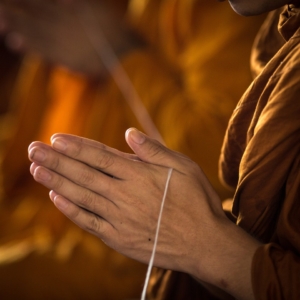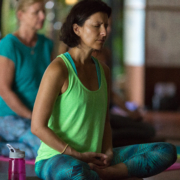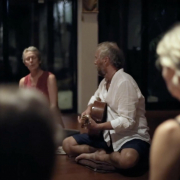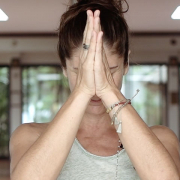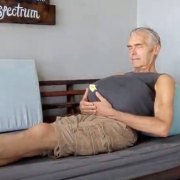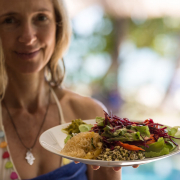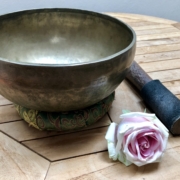 https://samahitaretreat.com/wp-content/uploads/2023/11/IMG_1290-2-scaled.jpg
1920
2560
Kirsten Mia
http://samahitaretreat.com/wp-content/uploads/2024/01/samahita-logo-v2.svg
Kirsten Mia2023-11-21 21:09:402023-11-21 21:09:40Music makes the world go round!
https://samahitaretreat.com/wp-content/uploads/2023/11/IMG_1290-2-scaled.jpg
1920
2560
Kirsten Mia
http://samahitaretreat.com/wp-content/uploads/2024/01/samahita-logo-v2.svg
Kirsten Mia2023-11-21 21:09:402023-11-21 21:09:40Music makes the world go round!Living Yoga off The Mat…
How do we “live Yoga off the mat?”
It is a phrase often thrown around in a class, at the studio and online. Many who claim to be “yogis” or those who just practice asana, perhaps don’t really understand the possibilities and depth that this practice of Yoga can offer us. Today we will begin to scratch the surface into the “rest of Yoga”, the parts unknown, ignored and not particularly eye-catching to put on one’s Instagram page, BUT, bear with me, it’ll only take a few minutes to read and hopefully you’ll gain a little more insight into true Yoga and perhaps then, over time, the residue of which, will begin to become part of your life, off the mat as well. Let us begin with ourselves, human beings.
How we conduct ourselves as human beings in the world requires some guidelines of sorts, which we learn mostly from our parents at a young age. We need a moral compass with which to navigate our behavior, reactions, responses. Through evolution over millennia, human beings have organized ourselves into groups all over the world, forming cultures, religions, ideologies, beliefs, politics, organizations, countries, rules and regulations. Our ability to work together and hold each other to account has attributed to our success as a species. We are the same, yet we are so different, depending on where you come from. Regardless of where you come from, most civilizations and peoples have very similar guidelines when it comes to the way we treat each other. We may not agree with all of them, or part of, but they are there to help us maintain a sense of equilibrium and balance in our existence and with the people around us. The alternative, is chaos, drama, hatred, delusion and suffering. Over the years, the yogis developed some guidelines which are known today, from Patanjali’s Yoga Sutras as the yamas and niyamas, the laws of nature. (the first 2 parts of the eight limbs of Yoga – yamas, niyamas, asana, pranayama, pratyahara, dharana, dhyana, samadhi)
II.32 Śauca-santoṣa-tapaḥ-svādhyāyeśvara-praṇidhānāni niyamāḥ
Purity, contentment, austerity, study and feeling divine presence are the niyamas.
Let’s start with the 5 niyamas, how we treat ourselves, the inner observances. They are tools to help us build character, to cultivate self-confidence, self-discipline and happiness, the bridge between you and your consciousness, the truth deep within ourselves.
– SAUCHA – Cleanliness and purity of thoughts and actions, both inside and out. Giving us the ability to recognize our bad habits that no longer serve us, a way to clean up our impurities. Being authentic and natural.
– SANTOSHA – Contentment. We are encouraged to accept and appreciate what we have in our lives so we are not constantly seeking the “next thing”. I’ll be happy if/when…
– TAPAS – “to burn”, austerities that purify all levels of being. Practices that are sincerely done to bring about control of the senses, discipline.
– SVADHYAYA – Self-study through philosophy, scripture, mantra and direct experience. To observe and reflect on our thoughts and actions in daily life. Being open to learning, always a student.
– ISVARA PRANIDHANA – Devotion, surrender, trust, full commitment with humility and gratitude. Dedication to the process, while letting go of the expectations. To follow a higher principle in life.
II.30 Ahiṁsā-satyāsteya-brahmacaryāparigrahā yamāḥ
Not causing injury, truthfulness, not stealing, harnessing of energies (moving towards Brahman), not taking anything that is not needed – these are the yamas.
The 5 yamas, refer to how we connect and interact with others and the world around us, our ethics. Practicing and taking these into consideration enables us to become more aware of our thoughts, words and actions and guides us to be more authentic, kind and understanding with ourselves and others.
– AHIMSA – Non-harming, non-violence towards self or others. Being peaceful.
– SATYA – Truthfulness, not lying, seeing and reporting things as they are, not as we would like them to be.
– ASTEYA – Not stealing, or taking that which is not yours, including ideas, information and emotional favours.
– BRAHMACHARYA – Right use of energy, moderation of the senses. Freedom from dependencies and cravings.
– APARIGRAHA – Non-greed, non-attachment, taking only what you need. Not being possessive over things or people.
These guidelines, which are not religious, nor are they dogmatic, presided over by some person, king, priest or organization, they are simply there to hold ourselves accountable. They are there for us to transcend our habits, fears, conditioning and untrained impulses. None of us are perfect, we make mistakes, so we would be wise not to judge others so harshly when there is still work to do on ourselves. Now we may or may not have had the perfect upbringing, support and guidance, but there is always the chance or possibility to change and transform. We have the ability as human beings, to change our story. Yoga is one of the ways to do that…
All of this material and the introduction to Patanjali’s Yoga Sutras is covered in the Centered Yoga 200hr TT. And if you’ve already covered this, then our ATT’s coming up next year dive deeper into these topics.
So, if you’ve been feeling lost, stuck, confused, burnt out, at a dead end, OR looking to dive deeper into the path of Yoga, consider coming to spend some time here with us in Thailand at Samahita. We have some wonderful programs, trainings and an amazing team of staff to support you in your wellbeing. See you soon!
References:
https://www.artofliving.org/us-en/yoga/beginners/yamas-niyamas
https://yogainternational.com/article/view/yoga-philosophy-basics-the-5-yamas/
https://yogainternational.com/article/view/yoga-philosophy-basics-the-5-niyamas/
More from the Samahita Blog
